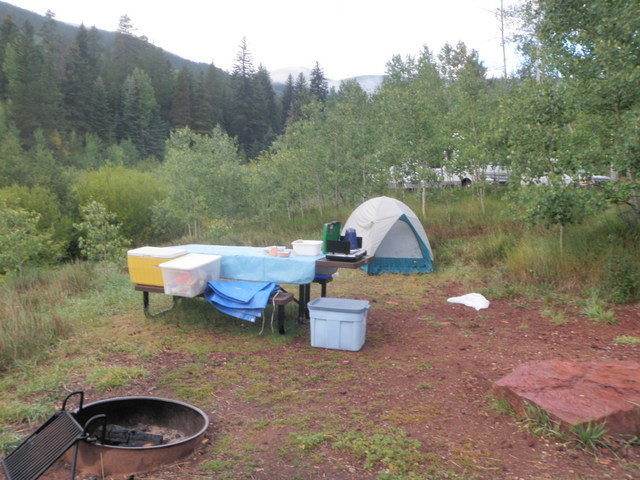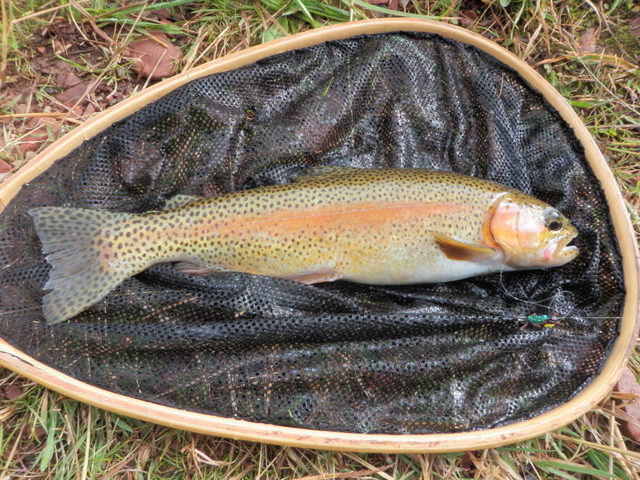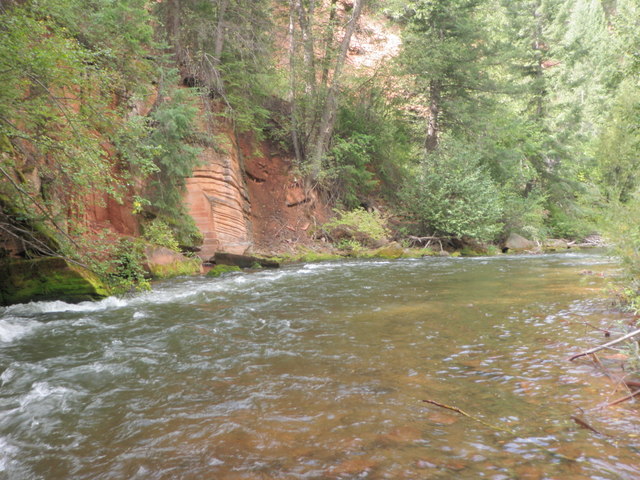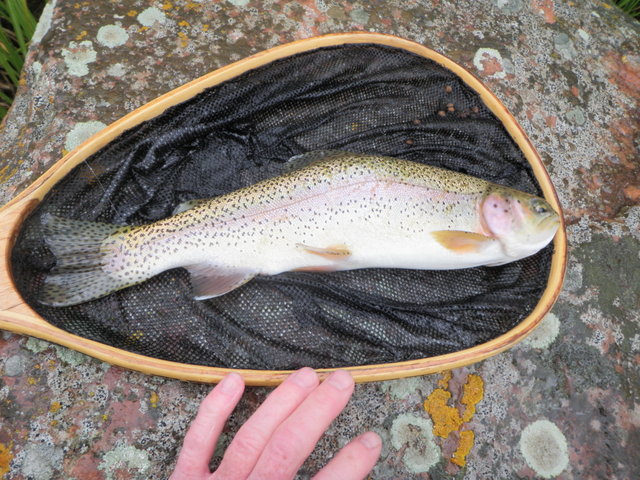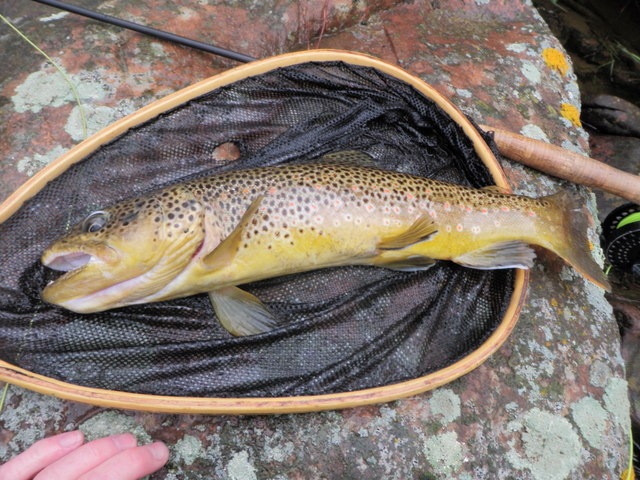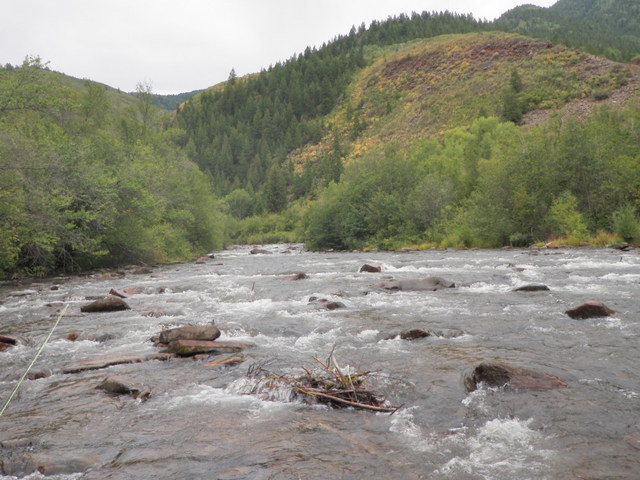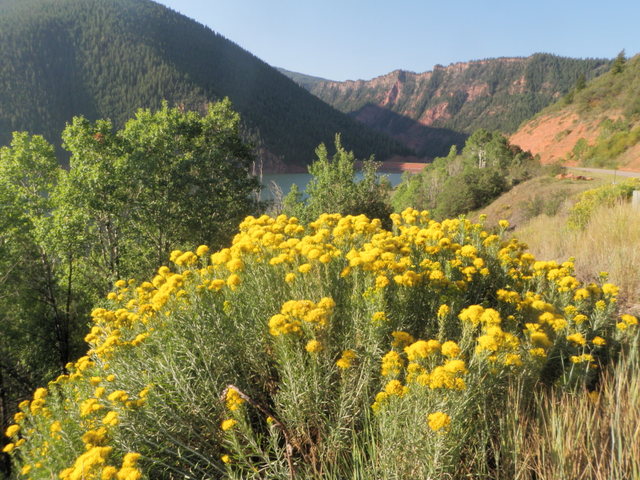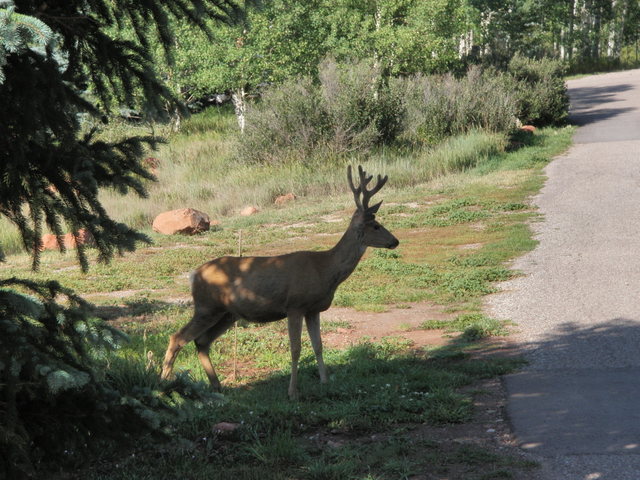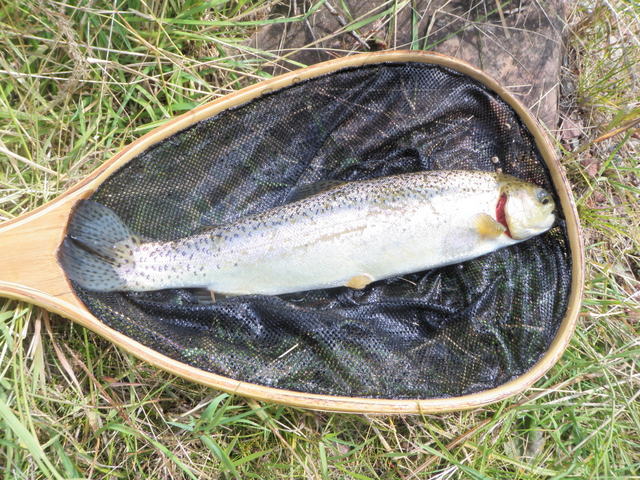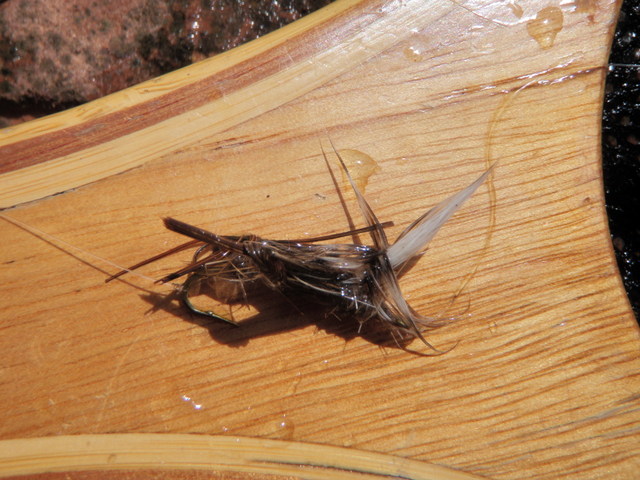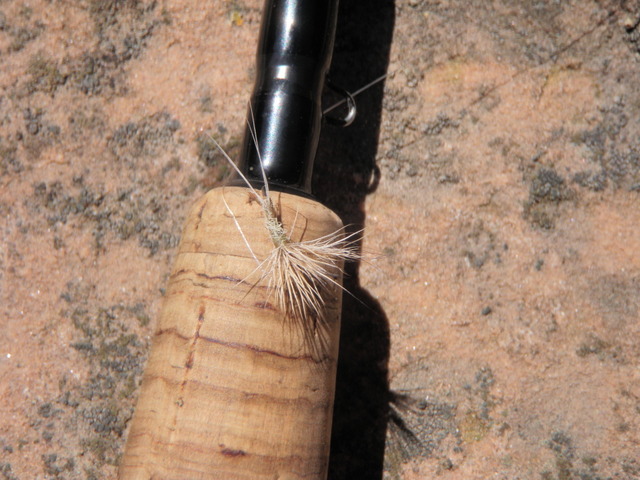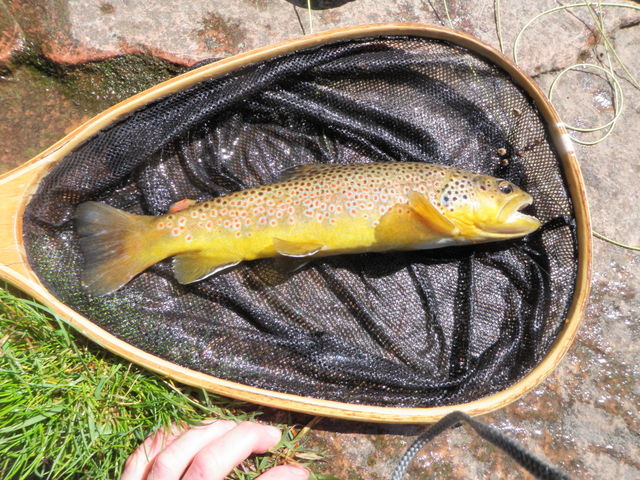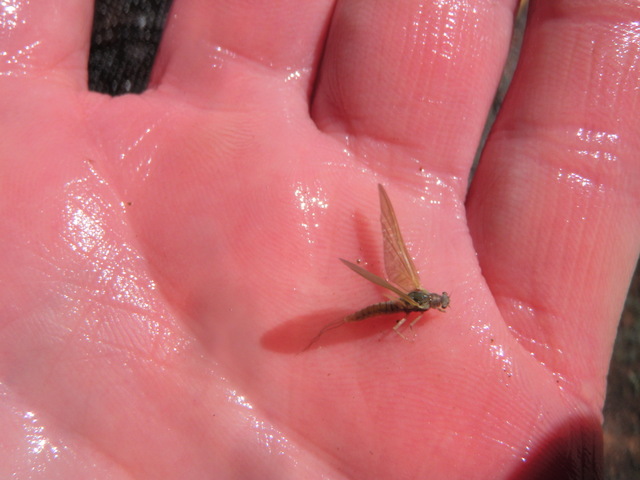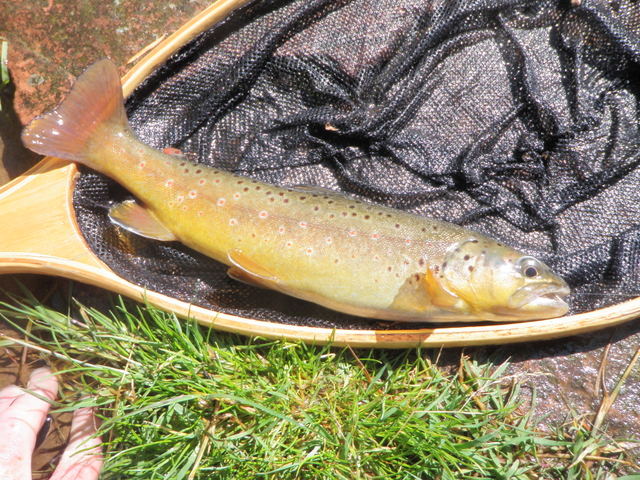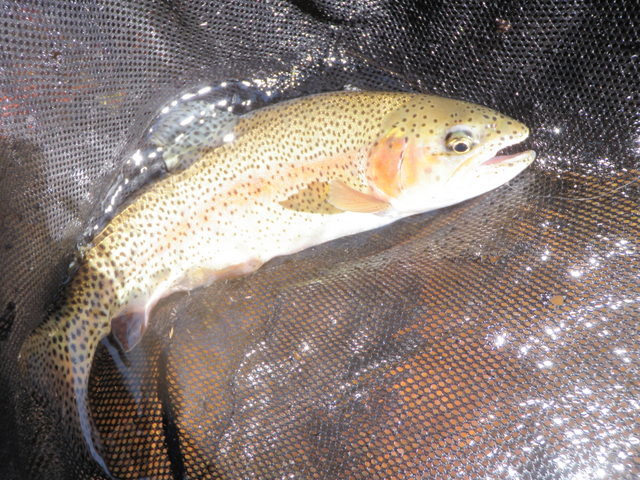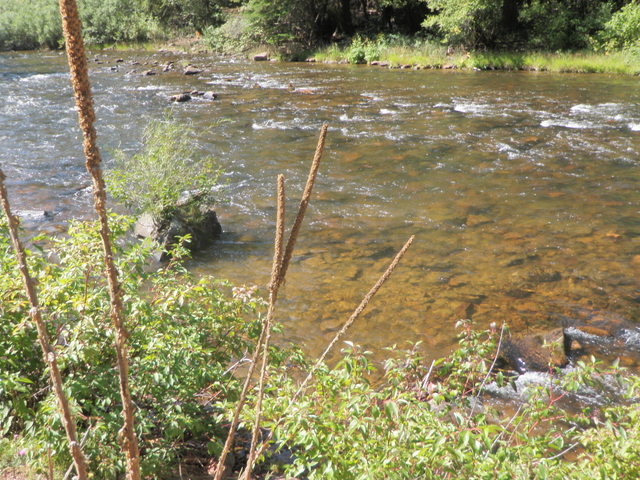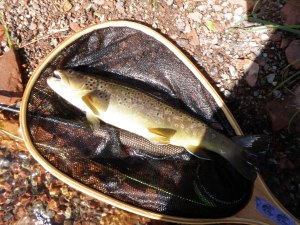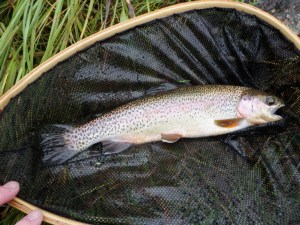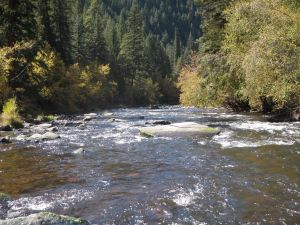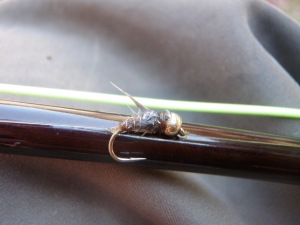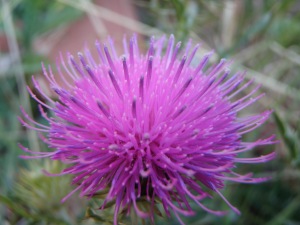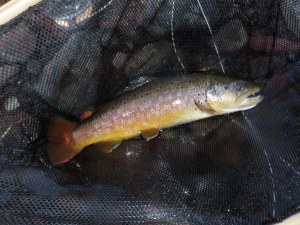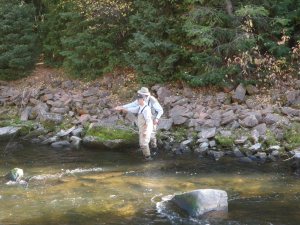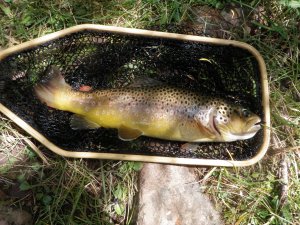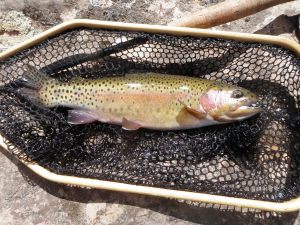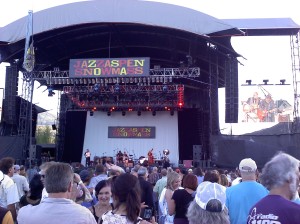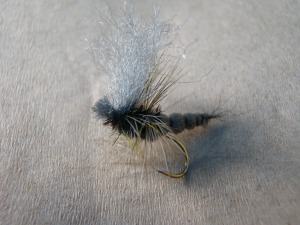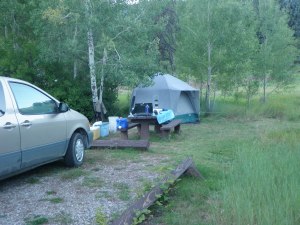Time: 9:30AM – 5:00PM
Location: Mile Marker 8; Area downstream and across from spring
Fish Landed: 20
Frying Pan River – 08/23/2012 Photo Album
Jane’s best friend Wendy was scheduled to visit from South Carolina August 22 – August 27, and they wanted girl time together, so I agreed to vacate the house and go on a camping/fishing trip. Initially I planned to go to the White River in the Flattop Wilderness; however, I read in one of my magazines that the flows on the White were low and the DOW was encouraging fishermen to not fish there due to high water temperatures. After reading this I decided to shift my plans and visit the Frying Pan River below Reudi Reservoir instead. The Frying Pan is a tailwater, and therefore I expected it to offer cold water and nearly ideal flows.
I left work at 10AM on Wednesday morning and returned home and went for a run, ate my lunch, packed the Santa Fe with all my camping and fishing gear, and departed Stapleton by approximately 1:45. I headed west on I70 and then exited and drove south on CO 82 at Glenwood Springs. I made good time and decided to stop at the Wendy’s in El Jebel for dinner. After dinner I continued south on 82, and some large clouds appeared, and I drove through some light rain before turning at Basalt and driving east along the Frying Pan River to the Little Maud campground next to Reudi Reservoir. I selected campsite no. 7 and paid for four nights, and then set up my small REI tent. I looked at my watch and realized there was still time for an hour of fishing, so I drove down along the river below the dam to mile marker 12 and parked.
As I was driving along I noticed a young shirtless bearded man climbing the bank across from the river as he surreptitiously gathered something and placed it in a sack. Was he gathering some sort of illegal drugs? As I was getting ready to fish in the wide pullout at mile marker 12, a gray Toyota Camry wheeled into the lot and parked below me. There was a female driving, and as I looked on, the young man arrived with his sack and climbed in the car. Were they creating the appearance of gathering something so they could monitor fishermen and break into their cars to steal valuables? I checked my car several times to make sure it was locked before I went down to the river to fish.
I tied on a Chernobyl ant and a beadhead hares ear and began to work the nice bend run and pool next to the car. It was hard to concentrate as the young man was now across the street on the bank harvesting again. The young woman was kneeling on the ground next to the car similarly picking something. I experienced a refusal to the Chernobyl and a momentary hook up before deciding to move up the road to an area with a series of stair step riffles. In the waning light I once again had a momentary hook up and a couple refusals. It felt like the fly was in the fish’s mouth, but the hook never penetrated the lip as I pulled it out of the mouth. By 8PM it became quite dark so I carefully returned to my car and gave it a quick inspection to make sure it wasn’t broken into or vandalized.
At this point the young man approached me and explained what they were doing. He took me across the street and pointed to the vines crawling up the hillside with creamy flowers on them and explained that these were wild hops plants. They were gathering the blossoms to make beer, and he held a flower under my nose to smell the hops scent. He said the hops had been planted by early miners in the valley and the plants continued to flourish. He told me that his girlfriend found some on the ground right next to the car which explained her strange activity. I questioned him to make sure he was certain of all this, as I was concerned that if he misidentified the plant, they could be drinking something poisonous. He assured me he did quite a bit of research. There was a big brown sign in the pullout that warned against taking firewood, rocks or plants from the national forest, and he explained that this was the cause for their secretive demeanor. The strange experiences that accompany fly fishing never cease to amaze me.
I returned to the campground and a light rain commenced, so I remained in the car to read and stay out of the rain. As ten o’clock approached there was a break in the rain, so I climbed into the tent and curled up in my down sleeping bag and fell asleep as the rain once again created a pitter patter on the rain fly of the tent.
On Thursday morning I awoke to overcast skies and wet surroundings as I made my breakfast, packed a lunch, and gathered up my fishing gear. The weather would pretty much remain the same all day with overcast skies, large clouds and air temperatures that never climbed above the 60’s. I had stopped at the Taylor Creek Fly Shop in Basalt on Wednesday night, and the salesperson informed me that the heaviest concentration of green drakes was between mile markers 8 and 10, so I drove to the pullout just below mile marker 8 and prepared to fish. It was quite chilly so I wore my fleece top in the morning, and I was fairly comfortable.
I walked down the road a bit to the next pullout and dropped down the bank to the river which was fairly narrow at this point and only a two foot corridor of softer holding water along the bank. I already had the Chernobyl ant and beadhead hares ear on my line from Wednesday night, so I stayed with that offering. As I began prospecting the slower water, I hooked and landed a nice rainbow on the Chernobyl and a small brown on the beadhead hares ear. By the time I reached the attractive pool next to the car and went a bit above I had landed three more small browns on the beadhead hares ear. This all took place over a period of 2.5 hours, so the fishing was actually quite slow, and I decided to break for lunch. I could see at least four or five nice fish in the pool by the car, but they were ignoring my offerings and pretty much hugging the bottom of the pool.
I ate my lunch by the large pool and afterward continued fishing upstream from where I broke for lunch. From previous trips to the Frying Pan, I knew that the green drakes typically emerged some time between 11AM and 2PM, so I tied on a green drake comparadun and began to prospect with this large fly. Fish were not attracted to this large morsel, so I added a beadhead pheasant tail as a dropper thinking that perhaps the PMD nymphs were becoming active in anticipation of a hatch. By 1:30 I was still stuck on five unimpressive fish, so I decided to move upstream. Perhaps the green drakes were at the upper edge of the range near the 10 mile marker, and I was missing the hatch? I needed to find out.
I threw my rod and gear in the back of the Santa Fe and drove up the road to the area near the spring which is near mile marker 10. I wanted to walk back downstream and fish back to the car through the long stretch of pocket water, but much to my amazement there were two fishermen in this area. I decided to walk downstream to a point 50 yards above the closest fisherman and fish upstream from there. A return to basics was in order so I tied on a parachute hopper and added a beadhead hares ear dropper. This combination was productive on the Taylor River, so why shouldn’t it work on the Frying Pan with no hatches evident? After fishing a bit with no takes, I observed a pair of fish moving subsurface and apparently feeding on nymphs, so I added a beadhead pheasant tail as a third fly. This tactic returned some immediate success as I landed two small browns before I reached the location opposite the spring where my car was parked.
At this point I felt that I could cross the river part way, then wade up the middle to a point where I could cross to the opposite bank. I fished some fair pockets and riffles as I negotiated across the river. When I reached the far bank there was a spot where the current angled against the bank and created an attractive run with a slower moving soft area next to the current seam. I tossed the hopper to the top of the run, and witnessed a refusal of the hopper where the current deflected off a rock. As I wanted fish to focus on the pheasant tail and not refuse the hopper, I switched the hopper out for a Chernobyl ant. This worked for a short while as I added two more browns that snatched the trailing nymph.
Shortly after this activity I began to notice pale morning duns on the surface of the river. By now the light was quite low as some heavy clouds moved in and some raindrops descended. I was already wearing my raincoat so the rain did not affect my fishing, but the mayflies were apparently relishing the cloud cover. Another fisherman was above me on the bank next to the road, and as I watched he appeared to net a fish. I decided to go to my proven PMD performer, the light gray comparadun, AKA money fly. The next two hours were magical as I moved from 10 or 11 fish landed to 20 on the day as the comparadun performed like a champ. During this time I heard some rumbling and the rain intensified, but I continued fishing right through the storm. The fish were taking the money fly with confidence, and I landed some very nice fish including a 17 inch brown and a 16 inch rainbow. Some of the fish were targeted after rising, but others were surprises that rose to prospecting casts to likely holding locations.
It was exciting to experience a nice hatch on different water from the usual spots three miles below the dam. The character of the water was also attractive to me as there were a series of stretches where the water tumbled over some large rocks and then created a wide fan shaped pocket or pool. There were perhaps four or five such stretches as I moved upstream, and each became a bit narrower and deeper.
By 5PM the rain slowed to a slight drizzle and the hatch pretty much ended, and I’d reached the top of the series of decent water locations, so I waded back along the bank and crossed to the road and called it a day. It was a great afternoon with fast paced action and my best hatch matching of the season so far. The hatch lasted for quite a while probably due to the cool overcast weather conditions. I was quite chilled as I stepped out of the water and crossed the road to my car, but I was also a happy camper with a 20 fish day on my first day on the Frying Pan River and some nice size fish to add to the excitement.

